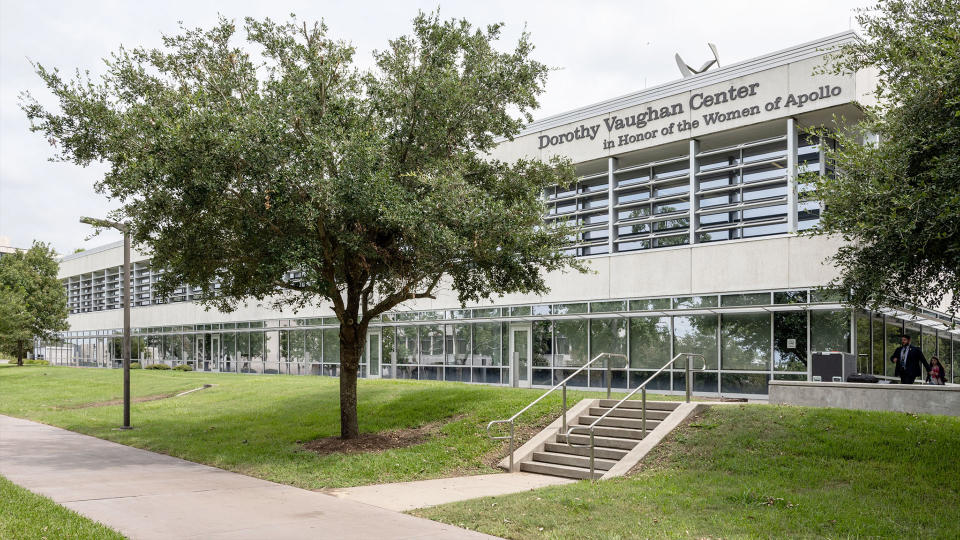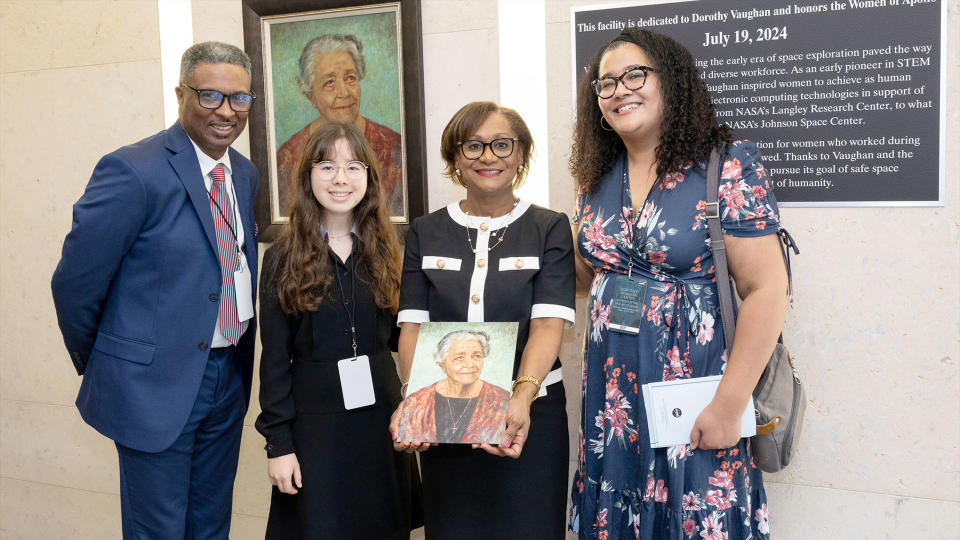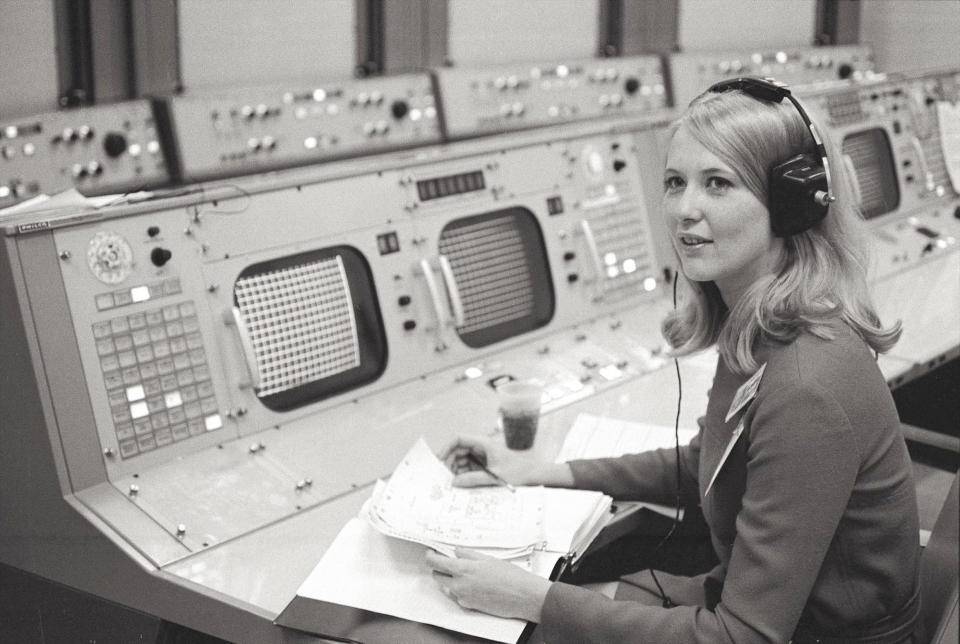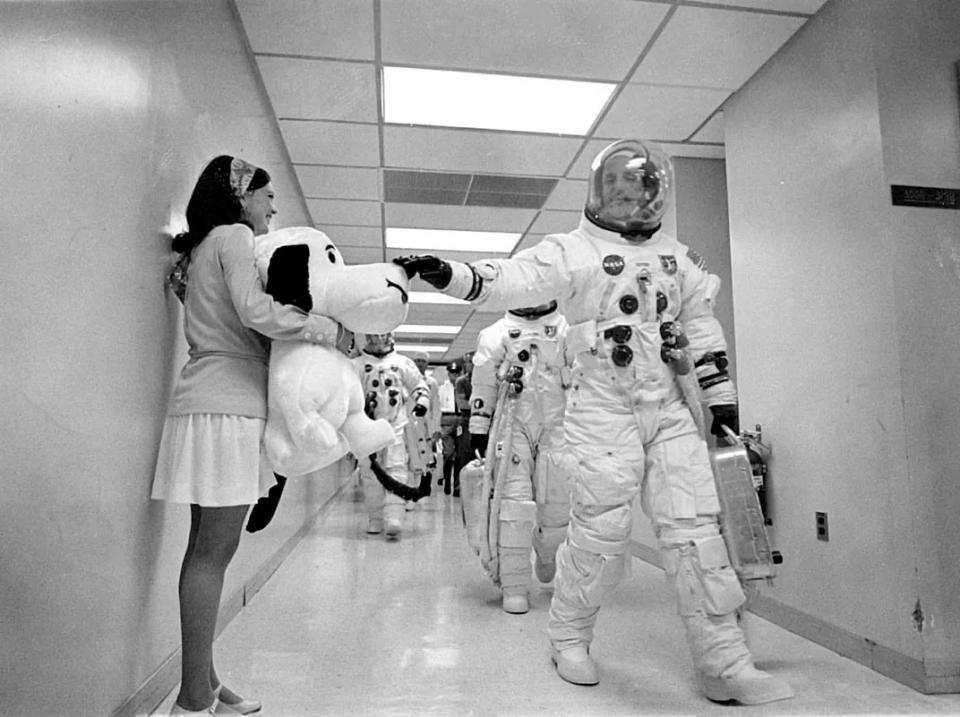When you buy through links in our articles, Future and its syndication partners may earn commission.

NASA is honoring a ‘hidden figure’ and all the women who contributed to the Apollo program by naming a building in Houston that was part of the Manned Spacecraft Center during the moon missions.
The agency’s Johnson Space Center (named after the president in 1973) commemorated the 55th anniversary of the Apollo 11 moon landing mission by dedicating one of its original buildings on Friday (July 19) as the “Dorothy Vaughan Center in Honor of the Women of Apollo.”
The title commemorates one of the “human computers” who led the U.S.’s early aeronautics research and also raised awareness of all women in the 400,000-person workforce that landed the first Americans on the moon.
“On behalf of NASA Johnson Space Center, we are proud to host this historic event as the agency honors the significant contributions of women to the space industry, especially the pioneers who have persevered through the many challenges of their time,” said Vanessa Wyche, Johnson Space Center’s third female and first Black director. “NASA’s Artemis missions will land the first woman and the first person of color as we prepare to return to the moon for long-term science and exploration.”
“It is a privilege to dedicate Johnson’s Building 12 to the innovative women who laid the foundations for our nation’s space program,” Wyche said.


Vaughan led the segregated “Western Area Computer” unit, staffed entirely by black female mathematicians, at the Langley Memorial Aeronautical Laboratory (today NASA’s Langley Research Center) in Hampton, Virginia.
When the National Advisory Committee for Aeronautics (NACA) was transferred to the newly formed NASA in 1958, Vaughan and most of the Western Computers were incorporated into the new Analysis and Computation Division (ACD), a racially and gender-integrated group at the frontier of electronic computing. Vaughan became an expert Fortran programmer.
Vaughan’s leadership helped advance NASA’s diverse workforce, particularly at Johnson, with the relocation of human computers from Hampton to Houston and the support of Building 12 to Mission Control. He was a champion of human computers and all individuals under his direction.
Vaughan died in 2008 at the age of 98. Seven years later, she was portrayed by Academy Award-winning actress Octavia Spencer in the film “Hidden Figures,” based on the book by Margot Lee Shetterly.
(Mathematician Katherine JohnsonEngineer Mary Jackson (portrayed by Taraji P. Henson) and Janelle Monáe were also honored for their role as Vaughan with the naming of the Computational Research Facility at Langley in 2016 and the NASA Headquarters building in Washington, D.C., in 2021, respectively.)
Although Vaughan did not work at Johnson, other women held prominent positions in Texas, which was the center of human space flight during the Apollo program.


Frances “Poppy” Northcutt, for example, began her career as a “computer” like Vaughan before becoming the first female engineer to work in Mission Control. Northcutt helped set the trajectory that the Apollo 8 mission followed to send the first astronauts to the Moon back to Earth. She was also part of the team that designed the maneuvers needed to bring the crippled Apollo 13 spacecraft and its crew home safely.
Rita Rapp, a physiologist who arrived at the Manned Spacecraft Center in 1962, led the development of the Apollo food system, the way astronauts’ meals were packaged for the trip to and from the moon. She personally oversaw the preparation of each Apollo astronaut’s menu. Rapp died in 1989 at the age of 61.
Other women at the center worked as secretaries in the astronaut office and supported Apollo crew members. Antoinette “Toni” Zahn, Charlene Stroman, Jamye Coplin, Charlotte Maltese, Penny Study, and Martha Caballero were assigned to eight to ten astronauts as the contingent grew.


Beyond Houston and Langley, JoAnn Morgan was the first female engineer and the only woman on the Apollo launch team at Kennedy Space Center in Florida. Nearby, in Kennedy’s Manned Spacecraft Operations Building (today, the Neil A. Armstrong Operations and Control Building), biomedical engineer Judy Sullivan was tasked with monitoring the health of the Apollo 11 astronauts.
Similarly, Dee O’Hara served as the astronauts’ chief nurse while managing the medical offices in Houston and the NASA Ames Research Center in California.
At the Massachusetts Institute of Technology (MIT) in Boston, Margaret Hamilton led the development of software for the Apollo spacecraft’s guidance and navigation system. And at the Marshall Space Flight Center in Alabama, Ethel Bauer helped calculate flight trajectories and metallurgist Margaret Brennecke oversaw material selections for the construction of the Apollo-era Saturn V rocket.
Barbara “Bobbie” Johnson was the Apollo program’s director of Mission Requirements and Evaluation, the highest position held by a woman in her department and giving her the responsibility of managing more than 100 (mostly male) engineers.
The Dorothy Vaughan Center in Honor of the Women of Apollo is one of the original permanent structures of the Johnson Space Center, constructed in 1963. It currently serves as an administrative support building.
The 6,000-square-foot building was renovated in 2012 to add energy-efficient features. In addition to hosting nesting birds and wildflowers, the rooftop garden helps reduce drinking water and energy use, provides better stormwater management and increases UV protection.
To follow collectSPACE.com Open Facebook and @ on TwitterCollecting area. Copyright 2024 collectSPACE.com. All rights reserved.